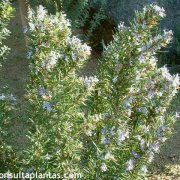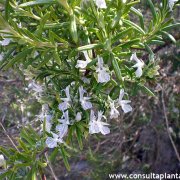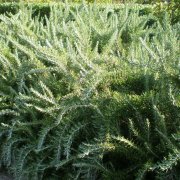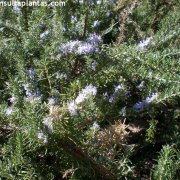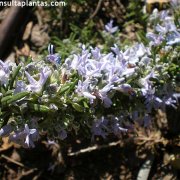Care of the shrub Rosmarinus officinalis or Rosemary |
|
The genus Rosmarinus, family Lamiaceae, includes 3 species of shrubs native to the Mediterranean region. The species are: Rosmarinus officinalis, Rosmarinus tomentosus, Rosmarinus eriocalyx. Common name: Rosemary. This species is native to the Mediterranean region. They are evergreen shrubs that reach 2 meters (6.56 feet) in height. The leaves are dark green on the upper surface and woolly white on the underside, their margins are rolled down and they give off a pleasant balsamic smell. The flowers are usually blue, although they are sometimes white or pink. Rosemary is used in orchards or in the garden of aromatic plants, to form low hedges and even in pots and planters. There is a prostrate variety that is used in hanging pots, in rockeries and to cover dry slopes. It's used in cooking, to prepare essences and in natural medicine for its stomachic, antispasmodic, menstruation-regulating and diuretic properties. Rosmarinus officinalis needs a very sunny exposure. It's a very rustic plant that resists high and low temperatures. Rosemary grows in any type of well-drained soil, even poor soils. Water moderately, waiting for the substrate to dry. Rosmarinus officinalis is a very resistant to drought plant. Fertilize with compost in the fall. Rosmarinus officinalis can be pruned in late winter to strengthen the plant and keep it compact. Rosemary is a very resistant plant to the usual diseases and pests. Rosmarinus officinalis is propagated by seeds sown in late spring. |
Images of the shrub Rosmarinus officinalis or Rosemary |
Find plants
Rosmarinus officinalis or Rosemary | Care and Growing
© 2025 FavThemes
